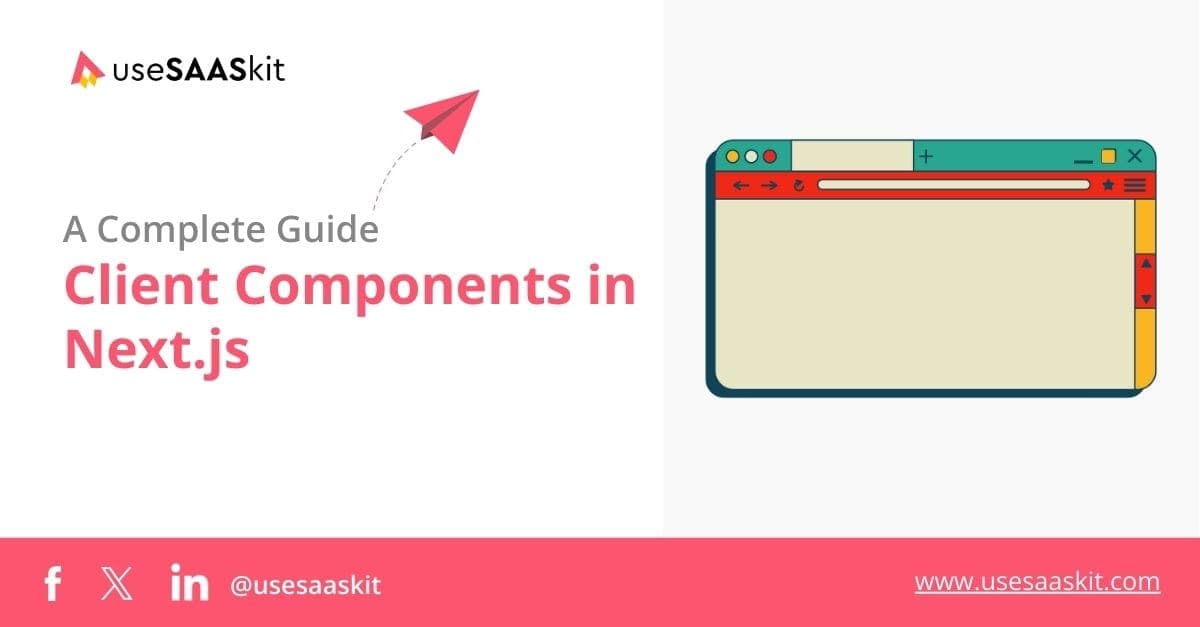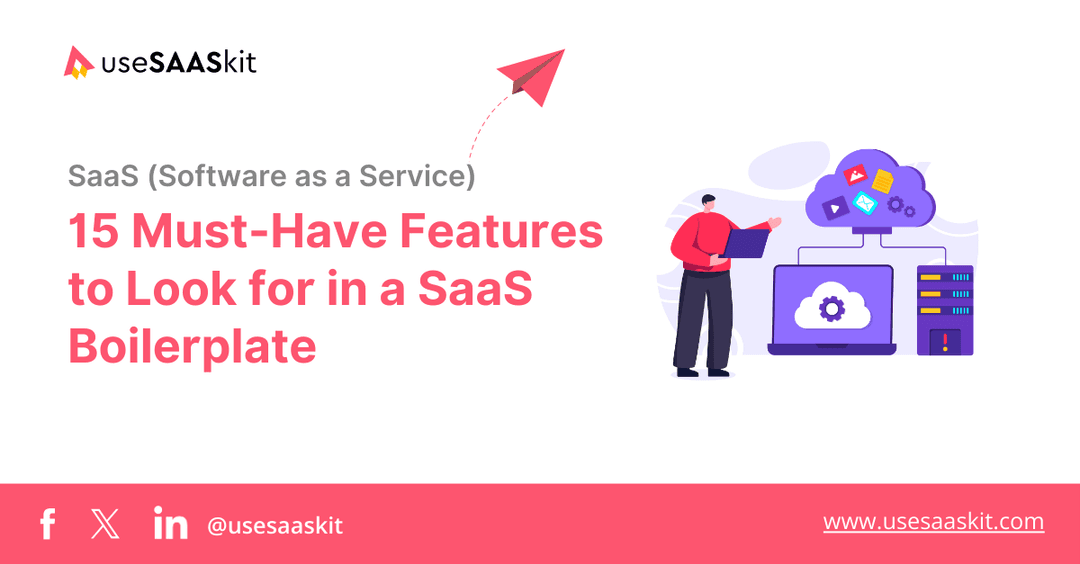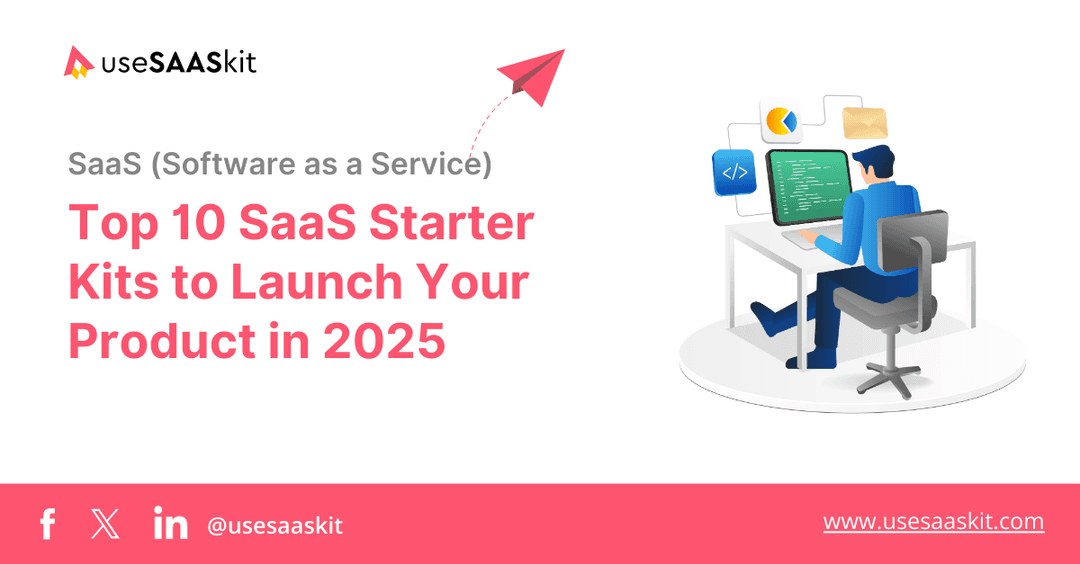Saturday, 31 Aug 2024
6 min read
How to Build Interactive UIs for SaaS with Next.js

With the fast pace of the evolving SaaS applications, there is a clear need for highly attractive and visually dynamic UIs more than ever before. This is where Next.js, one of the most powerful React frameworks comes in, and with the release of Next.js, creating interactive UIs is no longer a complex undertaking. One of the new additions to this version is the Client Components which in one way or the other assists the developer in enhancing the interactivity of the application being worked on.
In this post, we will focus more on Client Components of Next.js 14 and demonstrate how these components assist in creating dynamic interfaces of SaaS applications. This is that whether you are a front-end engineer or you develop SaaS applications and would like to hone your skills, this is the guide you have been looking for.
Table of content:
- What Are Client Components in Next.js?
- How Client Components Work
- What is the purpose of implementing Client Components in SaaS applications?
- Building Dynamic User Interfaces with Client Components in Next.js
- Best Practices for Using Client Components
- Conclusion
What Are Client Components in Next.js?
In Next.js, Client Components mark a new era in developing user interfaces as they allow us to create more interactivity and engagement than previously possible. Under the usual React paradigm, components can either be rendered on the server or the client’s machine. With Client Components, developers in Next.js are able to take some rendering of the UI to the clients such that they do not have to always depend on server-side API calls when implementing interfaces that need rendering of browser dependent features.
How Client Components Work
Client Components are components that are rendered on the client only. In contrast to Server Components which are hosted on a server and represented as static HTML, Client Components can be sent to the client and immediately be hydrated to make them functional, adding any extra enhancements after their initial load.
This is especially beneficial for any part of your UI that deals with users and as such has to deal with a lot of their inputs like forms and drop downs among other dynamic controls. The advantage of using Client Components is that they help improve the server’s activity and achieve better performance from the application.
What is the purpose of implementing Client Components in SaaS applications?
SaaS applications require a smooth and engaging user experience. Consumers are demanding more interaction with the interface and expect such interfaces to be responsive in nature when users are typing into a form, using a dashboard, or clicking through pages. Client components help fulfil this need more adequately.
Here are a few reasons why you should consider using Client Components in your SaaS applications:
- Better Performance: Shifting the rendering of such interactive components to the users clients side rather than the server helps to lighten the strain on the server which in turn leads to quicker responses and better user experience.
- Better Customer Experience: Implementing Client Components enables you to create UIs which immediately respond to the client’s interaction with the SaaS application thereby enhancing user experience of the application.
- Better State management: You can also handle the state more efficiently since these components are capable of making calls to the browser and other client resources
Building Dynamic User Interfaces with Client Components in Next.js
In the first place, we have looked at the advantages of applying Client Components. Now let us go ahead and look at some practical examples of how these components can be applied in your SaaS applications.
The following scenarios will be addressed in detail:
- Dynamic Form: Understand how to design a form which continuously changes contents as filling goes on.
- Designing An Interactive Dashboard: Learn how to create a dashboard that is constantly fed with up-to-date data and will also enable users to interact with various visual representations of data.
- Implementing a Search Feature: Explore the construction of a client side search bar which provides results instantaneously the user begins typing.
Example 1: Dynamic Form
In the case of SaaS applications forms are ubiquitous: user registration forms, data input forms, feedback forms etc. Thanks to Client Components you can make your forms more engaging and less static.
Consider the following example of a dynamic form where the fields evolve according to user’s input and user’s choices:
'use client';
import { useState } from 'react';
function DynamicForm() {
const [formData, setFormData] = useState({ type: '', value: '' });
const handleTypeChange = (e) => {
setFormData({ ...formData, type: e.target.value });
};
const handleValueChange = (e) => {
setFormData({ ...formData, value: e.target.value });
};
return (
<form>
<label>
Select Type:
<select value={formData.type} onChange={handleTypeChange}>
<option value="text">Text</option>
<option value="number">Number</option>
<option value="date">Date</option>
</select>
</label>
{formData.type && (
<label>
Enter Value:
<input
type={formData.type}
value={formData.value}
onChange={handleValueChange}
/>
</label>
)}
</form>
);
}
export default DynamicForm;In this example, if a user selects an item on the form, the form updates itself. The select dropdown has options that the user can select and in response to that, the input field responds appropriately. This form of interaction improves the overall usability as the UI is accommodating the operations or actions of the end user.
Example 2: Designing An Interactive Dashboard
Aside from the above examples, dashboards are part of almost all SaaS applications that give users data and view it in visual form. Let us create a dashboard that is interactive and uses Client Components that refreshes with the change in data.
'use client';
import { useState, useEffect } from 'react';
function Dashboard() {
const [data, setData] = useState([]);
const [loading, setLoading] = useState(true);
useEffect(() => {
// Simulate data fetching
setTimeout(() => {
setData([10, 20, 30, 40]);
setLoading(false);
}, 1000);
}, []);
if (loading) {
return <p>Loading...</p>;
}
return (
<div>
<h1>Interactive Dashboard</h1>
<ul>
{data.map((item, index) => (
<li key={index}>Data Point: {item}</li>
))}
</ul>
</div>
);
}
export default Dashboard;This very basic dashboard retrieves data and refreshes the screen when the retrieved data is reasonably adequate. But in real life, you could query data from the API and present it in specific charts or graphs with the help of such libraries as Chart.js or D3.js.
Example 3: Implementing a Search Feature
Search is very important in SaaS applications because very often users want to find something among the huge amount of data in the app. Thanks to Client Components that you can enhance as the user types, such search option can be very satisfyingly instant.
'use client';
import { useState } from 'react';
function SearchComponent() {
const [query, setQuery] = useState('');
const [results, setResults] = useState([]);
const handleSearch = (e) => {
const value = e.target.value;
setQuery(value);
// Simulate search results
const dummyResults = ['apple', 'banana', 'cherry'].filter((item) =>
item.includes(value)
);
setResults(dummyResults);
};
return (
<div>
<input
type="text"
value={query}
onChange={handleSearch}
placeholder="Search..."
/>
<ul>
{results.map((result, index) => (
<li key={index}>{result}</li>
))}
</ul>
</div>
);
}
export default SearchComponent;This search component filters a list of items based on user input and updates the results in real-time. This is a common pattern in SaaS applications where users are required to search for certain information quickly due to a large amount of data to be handled.
Best Practices for Using Client Components
In the Next.js, when working with Client Components, the following best practices should be observed and adhered to in order to achieve the expected performance and prevent maintenance challenges in the long run:
- Use Client Components for Highly Interactive Parts: Appropriate Client Components usage includes using them in parts of applications that are user interaction centered such as forms, dashboards, search components and the like.
- Client Components Are Great, But Use Them Wisely: While Client Components are powerful tools, they import usability as well, therefore, they do not have to be overused. For example, where contents are static or the components do not require any interaction from the users, Server Components are likely to be more beneficial.
- Optimize for Performance: Make it a point to always remember the performance cost that would come with adopting client-side rendering. Always utilize tools that enhance rendering through React’s useMemo and useCallback to reduce re-renders even if one is unnecessary.
- SEO Should Be A Consideration: This is due to the fact that Client Components are rendered on the client side. Hence they may not be as SEO friendly as Server Component rendered content. For information that will require indexing, Server Components or Static Generation should be opted for.
Conclusion
With the introduction of Client Components in Next.js, it has become much more convenient to create interactive UIs for SaaS apps. This will help achieve better User Experiences as you can afford to make the application more responsive. If it is dynamic forms, interactive dashboards, instant search features, or anything that is expanding through interactivity, Client Components are pivotal in enhancing user experience.
As you start utilizing Client Components in the work, make sure to utilize other Next.js capabilities such as Server Components in order not to lose performance and SEO of the application.
If you're looking for a head start, check out our upcoming Next.js Supabase SAAS templates designed specifically for SaaS development.
Happy coding!


